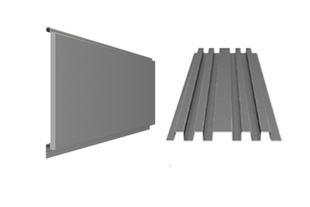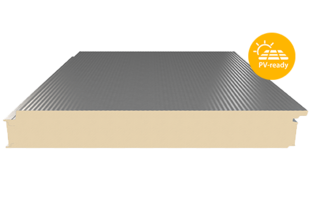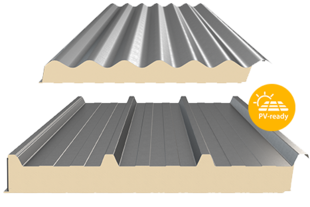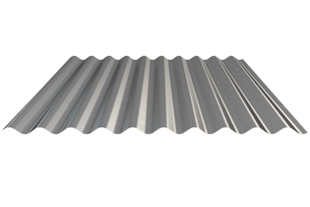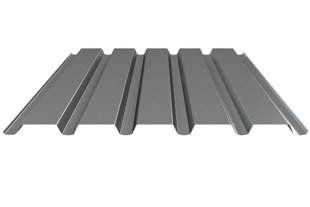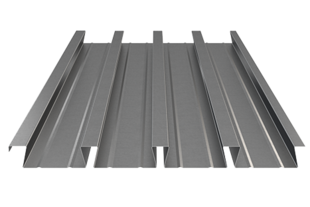The world of colours is constantly changing
Colours are a fascinating element in our daily lives. They influence our mood, create atmosphere and give our surroundings a personal touch. However, the world of colour is constantly changing and new trends and technologies are finding their way in. Whether it's architectural eye-catchers in the industrial landscape or the creation of a professional environment, the variety of colour options is almost unlimited.
The design of commercial and industrial buildings initially focussed primarily on practical aspects such as functionality; the surfaces mainly had to be protected against corrosion and the effects of the weather. Simple single-colour coatings in shades of beige, brown and green dominated the appearance, while the aesthetic component tended to remain in the background.
When production started in Würenlingen, Montana only used galvanised material and aluminium with stucco embossing. However, the MONTACOLOR® colour chart, which presented a comprehensive selection of colours, was created as early as 1974:

This served as inspiration for the customers - at that time, the profiled sheets were then stove-enamelled at Mawa AG in Goldach. At the beginning of the 1980s, the material was then – as today – purchased directly coil-coated and only then roll-formed.
Over time, architects and planners began to play with the aesthetic aspects, as industrial buildings can certainly be attractively designed. Montana soon realised that industrial buildings could be more than just anonymous structures.
To do justice to this trend, the company enlisted the support of Friedrich von Garnier, a German artist, industrial designer and colour designer. Together they developed the new MONTACOLOR® colour chart with around 30 different colours. Originally, von Garnier had suggested as many as 60 colours, but due to the challenges of material procurement and warehousing, the selection had to be limited. Each colour group was given its own sonorous name, such as Cedar, Ocean, Rhodes or Crocus.


With this expanded palette, Montana was now able to offer its customers customised design options. To strengthen the vision, the company hired its own colour consultant, Henriette Gendera. She trained with Mr von Garnier in colour theory for colour design proposals in industrial and residential construction. She then completed further training in Vienna and obtained a diploma as a colour and style consultant. Her lectures, seminars and individual colour consultations with planners and architects have resulted in impressive projects with striking colour gradients, such as Papyrus or Antalis (formerly Mühlebach):


The buildings were given a more personal touch and became architectural eye-catchers in the industrial landscape. After a few successful years, however, the department to which Mrs Gendera belonged was dissolved. She went into business for herself. Nevertheless, Montana has never stopped embracing new trends.
In the meantime, buildings are no longer just functional, but also aesthetically pleasing. At the beginning of the 2000s, the colours were still rather bright and bold with yellow, blue or green. In recent years, however, there has been a tendency towards earthy tones such as brown and grey. Back then, people also emphasised gloss and texture, but this trend has increasingly changed in the years since. Nowadays, more and more matt colours and finely textured surfaces are in demand. A few years ago, Montana expanded its range to include four charismatic matt anodised colours: Deep Grey, Brown Grey, Stone Grey and Champagne Grey are particularly eye-catching. Imitations of other materials are also a recurring theme: currently in the range are the two wood looks Vintage Oak and Rustic Oak, which combine the best of wood and steel in outstanding quality.
The world of colours in industrial construction is as diverse as the requirements that modern buildings have to meet. From neutral tones that create a professional atmosphere to vibrant colours that encourage creativity and energy, there are countless options available. Today, modern colour technologies and coatings offer a wide range of possibilities to meet the specific needs of industrial construction. In the future, Montana will continue to work on identifying the latest trends and offering planners and architects a contemporary colour palette.
